Series on Mewat – Part V
By Mumtaz Alam Falahi, TwoCircles.net,
Kashmiri and Jamilah are cleaning greens (specifically saag – a vegetable) at the edge of their field adjoining the road lying straight in the middle of Karhera village in Mewat district of Haryana. The women in 50s are agri laborers. They will sell the saag for Rs three per kg and thus will support their husbands to keep the kitchen burning. Kashmiri’s husband is a laborer and Jamilah’s a rickshaw puller. Kashmiri has seven children, Jamilah six. This sums up the average socio-economic condition of highly Muslim dominated Mewat.
Economic condition
The economic condition of people here is still not better, says Master Muhammad Umar adding that sources of income are limited and people are jobless. Men play cards while the youth are indulged in bad habits as they are jobless. There is no factory in Mewat. Even matriculates and +2 pass-outs are jobless. This is dampening the spirit of people who want to educate their children, says Umar.
The situation has forced women to come out in the fields and do agri labor to meet both ends “Muslim women are in good number involved in agriculture,” says Qari Sirajuddin, director of Al Falah Model School in Bhadas village.
Women agri laborers
Kashmiri of Karehra village has no land. She works as an agri laborer. Her husband Aas Muhammad is a laborer. They have seven children – 5 boys and 2 girls. Similarly, Jamilah from the same village is also an agri laborer while her husband Hasan Miyan is a rickshaw puller. They have six children – 4 boys and 2 girls. Girls are married, 2 boys are learning driving while 2 are small.
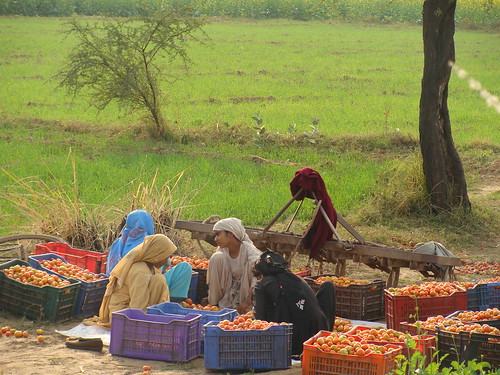
These days these women have little work. On a good day they earn Rs 150 when they have to work from dawn to dusk.
Natives of Mewat are generally small farmers, a good number of them landless. What is good for these farmers is that the soil is very fertile. On either side of Karhera village road, mustard is seen spreading in the vast area. “You see mustard everywhere because of rain in time,” says Sirajuddin while driving his car through the village overlooking the range of Aravali hills.
Water problem
But Mewati farmers are not much fortunate as “besides rain they have no other source of water,” adds Sirajuddin. The ground water is salty. There is no canal. Very few farmers have tube-wells that leave them in the middle of the season.
There is clean drinking water available in the bottom of Aravali hills. The government supplies drinking water from there through tube-wells, but not properly. Many of them have dried.
Abdur Razzaque of Haryana Public Health Department says: Drinking water is in the bottom of Aravali range of hills. We have tube-wells there but they have dried. We are now providing water through tankers in villages.
Farmers depend on rain water for irrigation. Government is not giving as much attention as required to provide water for drinking and irrigation. If a canal is brought here it will help the small farmers a lot.
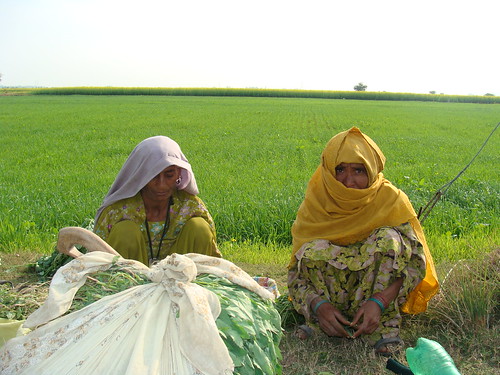
Government apathy
Elaborating on the government apathy regarding economic progress in Mewat, Master Muhammad Umar says: The attitude of the government is not positive. Despite being in proximity of Delhi and Gurgaon, there is no development in Mewat. There is no factory. Government is not interested in development here at all.
Umar gets depressed when he sees development in Mewat’s neighboring districts and backwardness in his own area. “When we go to neighboring districts like Rohtak, Ambala or Hisar and see development work there, we conclude that Mewat is being treated with a different law.”
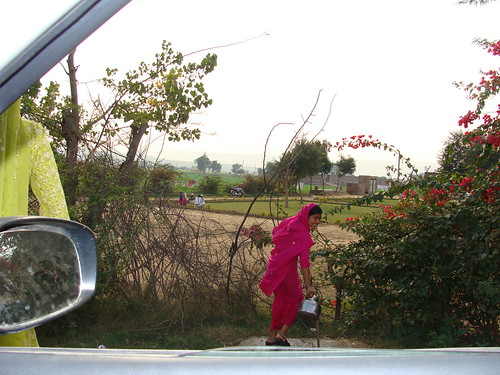
Ask him about the reasons, he says: Our representation in the Assembly is low. One or two MLAs are from here. People send even illiterates to the Assembly and so they are unable to put the issues of Mewat in the House to press the government.
Shafee Muhammad, headmaster of a government middle school in Nagina block, agrees on this point: “It is true that compared to Faridabad and Gurgaon, Mewat has been treated differently. Neither we know to take our rights nor do the authorities give us our rights. Our political representation has not been effective. Often we are in opposition. This also hampers development here.” But he says that Meos are not as poor as projected.
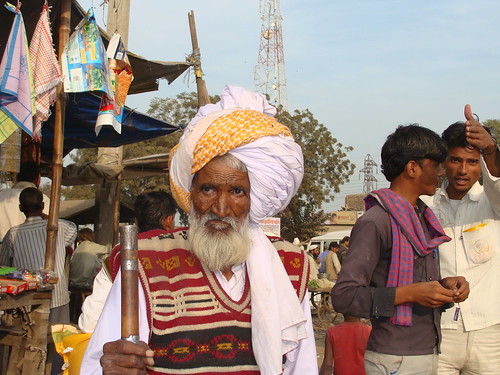
“Muslims here are not as poor as said. Besides educational backwardness, they are facing water problem. Otherwise people are involved in land business, shops, handicraft and other businesses. They spend lot on marriages, dowry, bikes and mobiles. If Mewat water canal project is completed and water comes here, the economic condition of the area will be much better,” Shafee Muhammad says.
Social evils
Like any other Muslim area, Mewat is also not free from social evils. The youths get involved in bad activities to fulfill their wishes as sources of income are limited.
“As new generation wants to have good bike and mobile and sources of income are limited he opts for wrong means to fulfill their desires,” says Shafee Muhammad. There is a gang in Mewat which is indulged in making fake golden bricks. Bike theft is rampant here, adds Shafee.
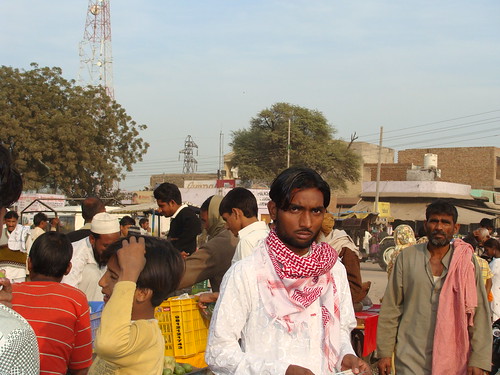
As for child marriage, another social evil, the rate has gone down.
Child marriage has gone down, but not ended, says Qari Sirajuddin. Master Muhammad Umar agrees and adds: The illiterates are still doing it. Earlier they would marry their daughters when they were in class IV or V (in the age of 13). Shafee Muhammad says: Girls are getting educated. Educated parents are not marrying their girls before 18. Only 10% of illiterates are marrying off their daughters in minor age.
(With this part our series on Mewat concludes—Editor)

